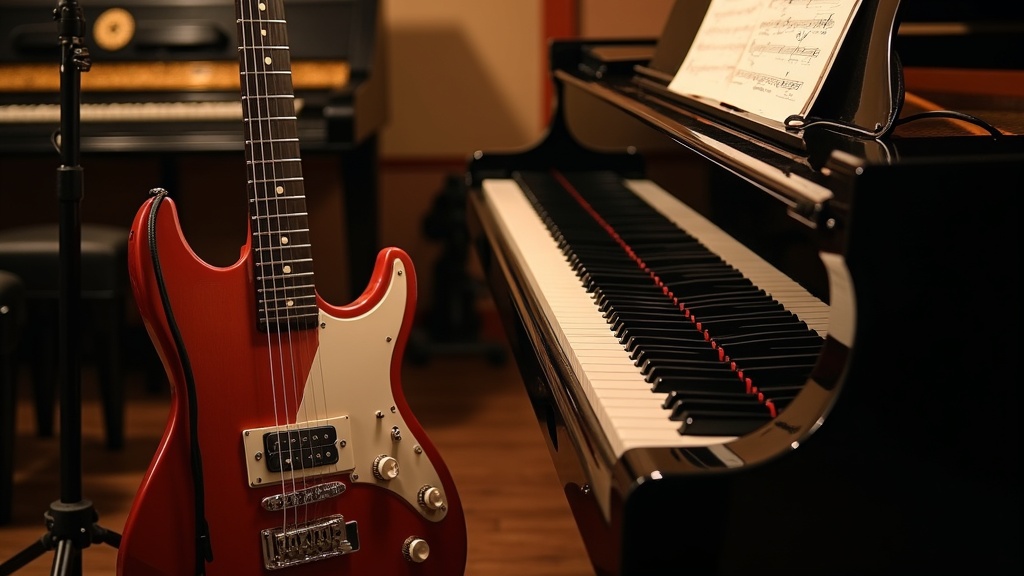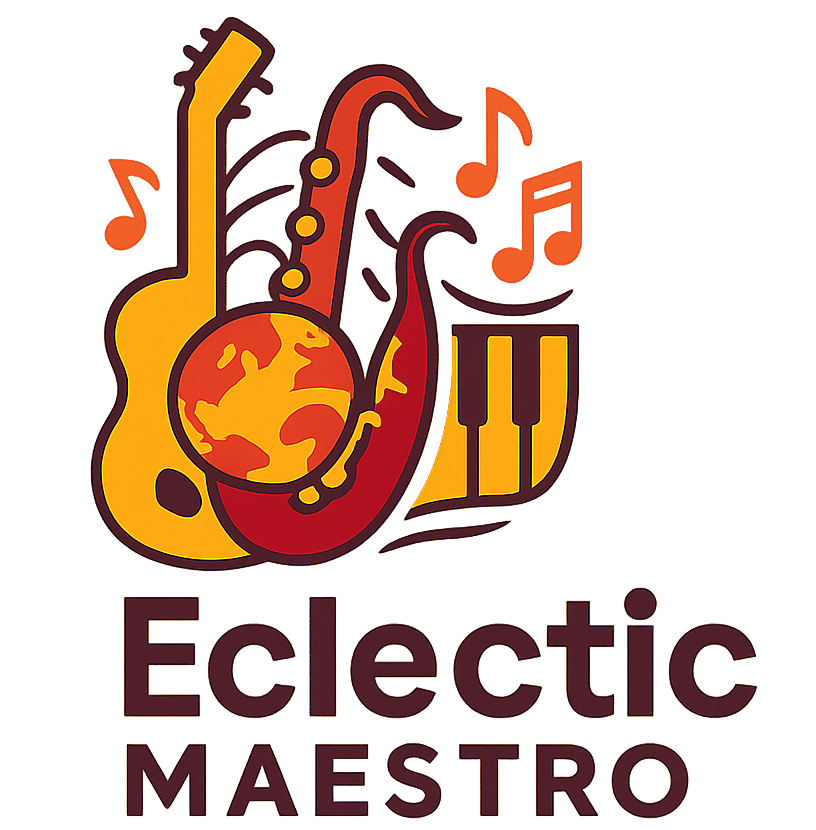If you’ve ever listened to a track that mixes a lush orchestral string section with a driving hip hop beat, you’ve heard a cool result of blending classical and contemporary music styles. I find this musical fusion super interesting because it can create new sounds that feel both familiar and fresh. Whether you’re a musician curious to experiment or just a music fan, understanding how classical and contemporary music can work together really opens up a whole new way to experience sound.

Why Mix Classical and Contemporary Music?
There’s something special about bringing together the old and the new. Classical music comes with rich harmonic textures, intricate rhythms, and a long tradition of storytelling through sound. On the other hand, contemporary music covers everything from pop and rock to electronic and hip hop, and tends to focus on catchy beats, modern production, and new technology. When these styles meet, the results can be pretty bold, opening up new directions for both composers and listeners.
This combination isn’t exactly a new idea, either. Bands like The Beatles have layered classical instruments into their songs, while artists like Jon Batiste and Dua Lipa sometimes draw on classical harmonies or motifs. Even Hollywood film scores—think Hans Zimmer or John Williams—are famous for mixing orchestral arrangements with synthetic sounds. If you check out the soundtrack from movies like “Inception” or “The Dark Knight,” you’ll catch plenty of these fusions in action. This blend keeps music moving forward and helps it stay fresh for new generations.
Getting Started: The Basics of Each Style
Jumping into this fusion starts with knowing what’s unique about each style. Classical music relies on written notation, detailed dynamics, and sections played by acoustic instruments such as violins, piano, brass, or woodwinds. Composers often build rich stories or moods that unfold over several minutes, sometimes even an hour.
Contemporary music, meanwhile, is more open to improvisation, uses electric and digital instruments, and often works with shorter forms, all designed for today’s fast listening culture. Chord progressions are usually simpler, and beats drive the energy. These songs are made to grab your attention right away.
- Classical Key Points: Detailed notation, acoustic instruments, broad dynamic range, and complex harmony.
- Contemporary Key Points: Electronic instruments, strong beats, repetition, and modern sound design.
Learning the basics of both helps you spot where they can overlap or blend together well. This could mean writing a string quartet part over a hip hop rhythm or adding synth textures to a traditional sonata form.
Popular Ways Musicians Combine the Two
Mixing classical and contemporary styles can be as simple as mashing up a pop song with an orchestra, or as detailed as composing new music that draws from both traditions. Here are some tried and true approaches people commonly use:
- Remixing Classical Melodies: Many producers take well known classical tunes (like Beethoven’s “Für Elise”) and add energetic drum beats, electronic bass lines, or rap verses over them.
- Orchestral Pop and Rock: Artists like Queen and Panic! at the Disco use live strings and brass sections in their rock arrangements to add dramatic flair and depth.
- Film and Video Game Scores: Modern movie and game music often layers sweeping orchestras on top of contemporary electronic elements, making the sound more immersive. Think the soundtrack for “The Legend of Zelda: Breath of the Wild.”
- Collaborative Albums: Sometimes, classical musicians team up with pop or electronic producers to make full albums; these often attract listeners from both worlds.
How to Start Creating Your Own Fusion Music
If you play an instrument or use music software, you don’t have to be a pro to try fusing these styles. Here’s a simple way to get started:
- Pick a Classical Motif: Start by choosing a melody or chord progression from a classical piece. Short and memorable themes work best, like a snippet from Bach, Mozart, or even a simple folk song arranged in a classical style.
- Add Modern Rhythm: Use a digital audio workstation (DAW) like GarageBand, Logic, or FL Studio to drop in a modern beat. Hip hop, dance, or pop drum patterns can instantly update the vibe.
- Layer Electronic Sounds: Blend synthesizers or sampled instruments with traditional sounds. For example, try a mellow synth pad under a live violin line.
- Experiment With Song Structure: Take the classical theme through the verse chorus bridge format that’s common in pop, or flip it. Try a pop song arranged for four instruments like a string quartet.
Trusting your ears is super useful here. If it sounds fun or interesting to you, it’s worth exploring whether more layers or changes help. There’s no single “right” way to approach this; everyone has their own style and taste. For added depth, recording live acoustic instruments and mixing them with digital loops or effects can lead to fresh ideas. You might even layer in nontraditional instruments, like a harmonica or ukulele, for more flavor.
What to Watch Out for When Mixing Styles
Pulling together music from centuries apart does have a few challenges. Here’s what I usually keep an eye on:
- Balance: Classical and contemporary instruments can have very different volumes and timbres. Sometimes, the strings or woodwinds can get drowned out by loud synths or drums. Using EQ (equalization) and careful volume adjustments helps everything fit together.
- Arrangement: Too much complexity or too little can make the mix feel cluttered or thin. Finding just the right amount of each style takes a bit of trial and error.
- Performance Technique: Classical musicians might not be used to improvising or working with a click track, so it helps to blend rehearsal techniques from both camps.
- Notation vs. Feel: Classical players read sheet music, while contemporary players might prefer to improvise or use chord charts. Getting everyone on the same page speeds up rehearsals.
Planning and communication make a pretty big difference here. When a project brings together classical and contemporary artists, agreeing on the vibe, structure, and final sound helps keep the process smooth.
Arranging Tips
Arranging is where the real magic happens. Here’s a few basic tips that make it easier:
- Try starting with a simple version of the melody before adding complex harmonies.
- Let each section shine; maybe the strings take the lead in the verse, and the beat takes over in the chorus.
- Use silence or space between sections to highlight the switch up from classical to modern elements.
- Experiment with dynamics—give the classical instruments moments to stand out without the beat, and then let the modern rhythm come back in to add energy.
Production Tips
If you’re working on a computer, blending samples, VST instruments, or recorded sections makes a big difference. Play around with reverb and effects to glue everything together. Sometimes, running a live cello through a distortion pedal or adding tape saturation to strings can create cool, unexpected sounds. If you want to make your project even more unique, try blending in environmental sounds, field recordings, or subtle electronic glitches.
Real World Examples and Inspiration
Plenty of musicians blend classical and contemporary music in eye catching ways. Here are a few examples I always find worth checking out:
- 2Cellos: These guys arrange pop and rock songs for two cellos. Their covers of AC/DC or Michael Jackson are wild but still show off classical skill.
- Clean Bandit: Blending electronic dance beats and catchy vocal hooks with classical strings, their music has hit the charts on both sides.
- Lindsey Stirling: A violinist who writes and performs tracks mixing dubstep, electronic music, and classical style melodies.
- Classical Remixes by DJs: DJs like Tiësto and Armin van Buuren sometimes remix classical music, either for big dance festivals or streaming playlists.
You might also try searching “classical crossover” or “orchestral pop” on streaming services for more inspiration. These genres show how much variety and creativity is possible when you bring classical and contemporary ideas into the same space. If you’re curious about other examples, artists like Vanessa-Mae and groups like Apollo5 offer fascinating fusion tracks worth listening to.
Frequently Asked Questions
Here are some of the most common things people want to know about mixing these two music worlds:
Q: Do I need formal training to write or play fusion music?
A: You don’t strictly need a classical degree or pop songwriting background. Watching videos, trying out ideas, and working with other musicians makes a big difference. A little bit of theory helps, but curiosity is just as valuable here.
Q: What if I only play one style (classical or contemporary)?
A: You can still collaborate! There are plenty of online musicians or local groups interested in fusion styles. Many pop musicians have started learning string instruments, and lots of classical musicians are exploring rock or electronic gear.
Q: Are there software tools for blending these styles?
A: DAWs like Ableton Live, Logic Pro, or FL Studio come with loads of classical instrument samples, synths, and loops. Some even offer presets for fusion genres.
Why People Enjoy This Blend
Combining classical and contemporary styles clicks with people because it brings both nostalgia and next level cool vibes. I’ve noticed it can make classical music feel more current, and give contemporary songs added depth or drama. Whether you’re listening for study, creativity, or just for fun, exploring this fusion is a fun way to hear what’s possible when boundaries break down. Many educators are even using this style to get students excited about music history while helping them learn hands on.
More musicians are trying out these combinations every year, and it’s definitely worth watching and hearing where things go next. Feel free to experiment, check out new sounds, and share your own takes on this musical mashup. The adventure of mixing classical and contemporary music has loads to offer for anyone willing to explore!
